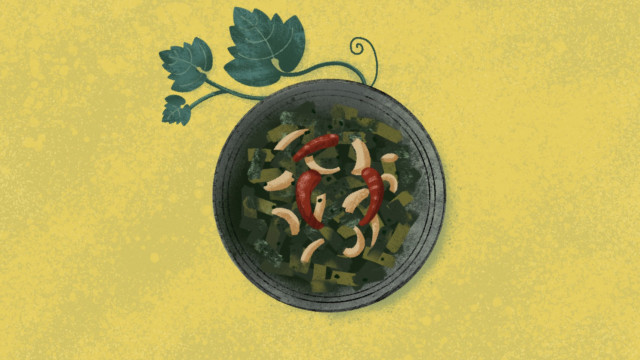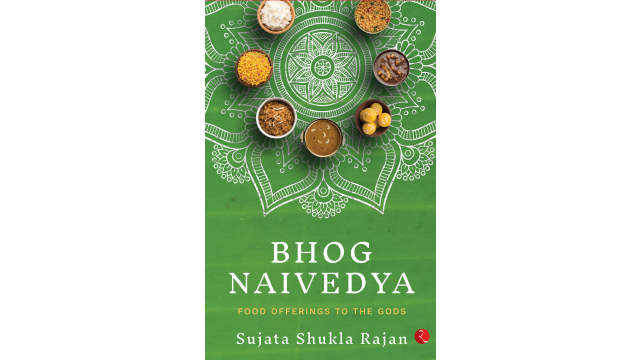Chasing Pandan

On the first morning of my first trip to Bangkok, I headed for the lavish hotel breakfast buffet. Determined to make the most of my three-day stay, I steered clear of the continental section and headed straight for the Thai counter. Before me were rice congee with all kinds of condiments, stir-fries, Thai-style omelettes, moo ping (grilled pork) and other skewered meat, fresh fruit, dim sum — the works.
A small bowl with a single green, cuboid sweetmeat caught my eye. I had no idea what I was about to taste; it looked delicate and pretty, and I was fascinated by its layers of green and white.
I took a small bite, and the sweet flavor exploded in my mouth. “How do I know this flavor?” I wondered. It’s been over ten years, but I can still remember my puzzlement. I had never had Thai sweets before, but the taste was both familiar and unfamiliar. What was it?
The sweet was khanom chan, a steamed cake of nine silky, chewy layers, made with a batter of coconut milk, rice flour, and tapioca and arrowroot starches. It was flavored with pandan. Every single ingredient could be found in an Odia pantry back home, but the algorithm of cooking was entirely different.
A Return to Roots
I had grown up with pandan, Pandanus amaryllifolius, known as annapurna patra in my home state of Odisha in India. My grandmother always added one whole leaf to kheer, to enhance the rice pudding’s aroma. On auspicious festive days, she would also add it to rice. The annapurna patra, a leaf that had dotted my childhood, was lodged in a crevasse of memories that ran so deep I never thought of it consciously until I tasted it again in a foreign land, and a foreign cuisine.
Pandan is not a food experience but rather a flavor experience, with fruity undertones and a hint of coconut. Sometimes referred to as the “vanilla of the East,” like vanilla, pandan is used as a flavoring agent in many different desserts. Incredibly versatile, pandan may be used in ice cream, cakes, and sweet icings, but can also add a layer of flavor to savory dishes. A traditional way of enjoying pandan in savory cooking is to add it to rice, which will give the rice a pleasant aroma. Pandan can also be boiled with water to produce a tasty beverage.
The pandan plant has some 600 species, and at least 36 different kinds grow in India. In the southern district of Ganjam in Odisha, pandan (Pandanus odoratissimus) is commercially cultivated for making kewda, an essential oil distilled from the male flower that is often used to flavor biryani and rice puddings. Ganjam kewda is even registered under the Geographical Indications (GI) of Goods by the Indian government. The flowers of this species, called kia phula or ketaki, are exclusively used to make kewda, whereas annapurna leaves are used in different ways.
In Ayurveda, pandan is associated with madhura or sweet rasa and is sometimes prescribed in folk medicine for its cooling effect for aiding digestion and as a mouth freshener. The green pigment extracted from leaves doubles as a natural food colorant to foods. Pandan leaves are found to be rich in iron that helps to improve energy. They are high in fiber which supports gut health and can aid in digestion.
Though the origins of pandan are relatively unclear, it is believed to be native to Southeast Asia. The plant likely made its way to the Odisha coast via ocean trade routes. Discovering pandan in Thailand was like taking a long route home. The history lessons that I had nodded over at school suddenly made sense, wafting back with the fragrance of the annapurna leaf.
I remembered learning about the Sadhavas, maritime traders from the historic kingdom of Kalinga (including present-day Odisha). who traded long pepper, cinnamon, cardamom, camphor, gold, textiles, and jewelry all over Southeast Asia. Hinduism travelled to Java and Bali with these traders.
According to historian R.D. Banarjee, the Hindus from Kalinga introduced their religion to Java in the 4th century. Before that, in the 3rd century BCE, they also went to Cambodia, leaving their impact on the script, textiles, and architecture of that region. This maritime trade also had great influence on the cultures of Sri Lanka and Thailand. There was continuity in dialects, languages, religious practices, and cuisines between Odisha and Southeast Asia.
Pandan, Past and Present
After that first trip to Bangkok, I began piecing together loosely connected bits of information, forming associations through experiments in the kitchen. I made my own version of buko pandan, a Filipino dessert made of strips of fresh young coconut with sweetened milk, sago pearls, and pandan jelly.
I made pandan cake, a basic tea cake transformed into a green chiffon delight with pandan juice and coconut milk. And pandan pancakes with coconut jaggery stuffing — a cross between the Indian patishapta and the Indonesian dadar gulung. I’ve even flavored the humble coconut burfi, the ubiquitous Indian sweet, with pandan.
The desserts aren’t as picture-perfect as that pretty green khanom chan, but they are an extension of my “what ifs.” What if I could share my discovery that pandan juice can be used to flavor and color sweets with my grandmom? Would she use it to bring a new dimension to her pithas? Would she have more insights into annapurna to share?
The Thai phrase “Khlai khlai tae mai meuan” roughly translates to “Same-same, but different,” which is something we Indians like to say. I could not find a better way to describe my pandan experiments.
Key Takeaways
- Pandan leaves are good for immunity.
- It has anti-inflammatory properties.
- Pandan supports gut health.









